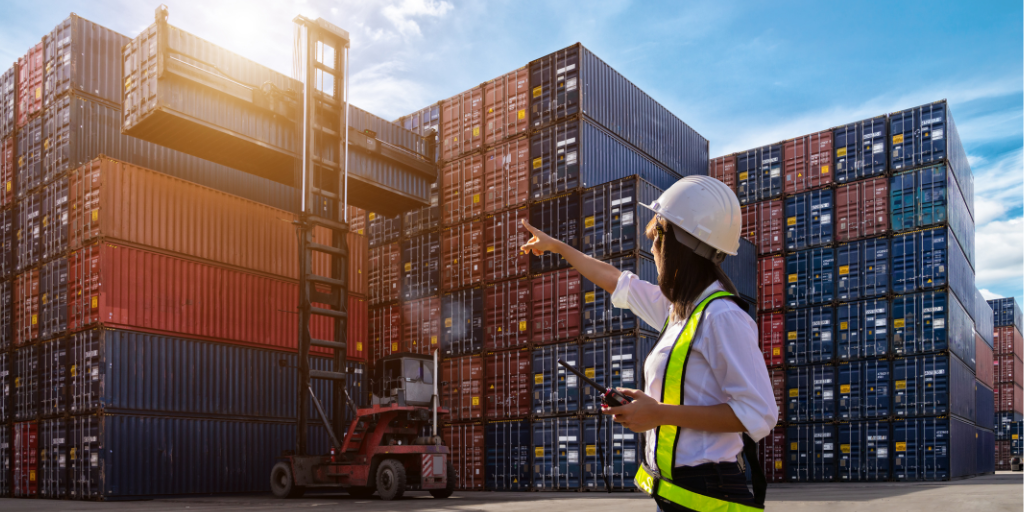The logistics industry is no stranger to disruption, but in 2025, the stakes are higher than ever. With technology accelerating at breakneck speed, customer expectations soaring, and supply chain challenges becoming more intricate, manufacturers are at a crossroads. The question isn’t whether to adapt—it’s how fast you can pivot to stay competitive. These five trends aren’t just predictions—they’re your roadmap to turning potential roadblocks into strategic advantages.
1. Advanced Analytics Powering Smarter Decisions
Data is the backbone of modern logistics, but raw data alone isn’t enough. In 2025, advanced analytics will take center stage, enabling manufacturers to turn complex datasets into actionable insights. These tools allow businesses to:
- Optimize carrier performance and route planning.
- Predict disruptions before they impact operations.
- Identify cost-saving opportunities across the supply chain.
Unlike traditional methods that focus on historical performance, predictive analytics leverages AI to forecast future scenarios, helping manufacturers proactively address challenges. Whether it’s reducing shipping delays or improving inventory accuracy, manufacturers embracing these tools will see significant benefits.
2. Supply Chain Digitization for Real-Time Visibility
Gone are the days when tracking shipments meant endless calls to carriers. In 2025, supply chain digitization will reach new heights, giving manufacturers real-time visibility into every aspect of their operations. Tools like Transportation Management Systems (TMS) and Internet of Things (IoT) devices are enabling:
- Tracking information and updates to reduce uncertainty.
- Streamlined communication with logistics partners.
- Centralized data for faster decision-making.
This digitization improves operations and enhances customer satisfaction. Real-time updates provide customers with transparency about their orders, fostering trust and loyalty.
3. The Shift from 3PL to 4PL Models
As supply chains become more complex, more companies are finding that their logistics needs align closely with the strengths of a Fourth-Party Logistics (4PL) model. While 3PLs continue to excel at operational execution, 4PLs provide an additional layer of strategic integration, offering manufacturers a more comprehensive approach to managing their supply chains.
Here’s why the shift matters:
- Holistic Oversight: 4PLs manage multiple 3PL providers, ensuring seamless coordination and optimization across the supply chain.
- Strategic Alignment: They focus on aligning supply chain strategies with broader business goals, delivering long-term value.
- Advanced Technology: 4PLs leverage cutting-edge tools, like Business Intelligence (BI) platforms, to provide end-to-end visibility and actionable insights.
For manufacturers managing complex operations, 4PLs offer a level of integration and strategic foresight that can’t be matched by 3PLs. This transition represents a pivotal opportunity to streamline logistics while improving cost efficiency and customer outcomes.
4. Sustainability as a Core Business Driver
Sustainability is no longer a “nice-to-have”—it’s a business imperative. In 2025, manufacturers must prioritize environmentally friendly logistics practices, such as:
- Optimizing shipping routes to reduce emissions, which reduces cost.
- Partnering with eco-conscious carriers.
- Investing in sustainable packaging materials.
Not only does this align with growing consumer demand for ethical business practices, but it also positions manufacturers to comply with emerging regulations and attract partnerships with sustainability-focused companies. Additionally, adopting sustainable practices often leads to significant cost savings, particularly through reduced energy expenses.
5. Increasing Collaboration Across the Supply Chain
Collaboration between manufacturers, suppliers, and logistics providers is becoming more critical. In 2025, advanced communication tools and shared data platforms will foster deeper partnerships, enabling:
- Faster issue resolution.
- Improved inventory management through better demand forecasting.
- Stronger relationships with key logistics providers, allowing for increased flexibility and problem solving.
This trend underscores the importance of working with partners who can integrate seamlessly into your operations, such as 4PLs that coordinate with multiple stakeholders for maximum efficiency.
Take the Next Step: Master Your Logistics Strategy for 2025
The logistics trends shaping 2025 emphasize the need for manufacturers to embrace technology, strategic partnerships, and sustainability. By staying ahead of these changes, you’ll not only streamline operations but also enhance customer satisfaction and position your business for long-term growth.
To dive deeper into the future of logistics and how 4PLs can revolutionize your supply chain, download our guide: 3PL vs. 4PL: A Guide for Manufacturers, Distributors, and D2Cs in Selecting the Right Logistics Partner.
In this guide, you’ll learn:
- The critical differences between 3PL and 4PL models.
- How 4PLs deliver advanced visibility and strategic insights.
- Key considerations for choosing the right logistics partner.
Don’t let outdated logistics strategies hold your business back. Download the guide and prepare your operations for success in 2025 and beyond.





